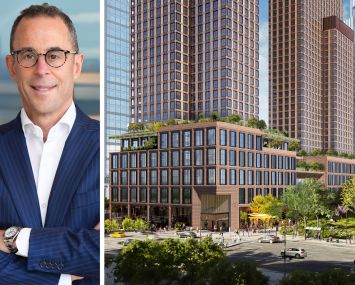‘Slow But Fragile Recovery’ Predicted for NYC Economy Post-COVID
By Rebecca Baird-Remba March 3, 2021 7:19 pm
reprints
New York City’s economy faces a “slow but fragile recovery” coming out of the coronavirus pandemic, a new report found.
The New York City Independent Budget Office released a report this week that highlighted the depths of the city’s economic losses during the pandemic, and estimated that 2019 employment numbers or tax revenues would not return until 2025.
The nonpartisan agency found that New York City lost 557,000 jobs last year. The city experienced a devastating loss of 889,000 jobs in the first two quarters of 2020, during the peak of the coronavirus pandemic, followed by a net increase of 332,000 jobs in the latter half of the year.
However, job growth is expected to improve, with a projected increase of 152,000 jobs in 2021, and 149,000 in 2022. By the end of 2025, total citywide employment will come close to, but not quite match, job numbers in 2019.
Hospitality and retail employment suffered the largest job losses in 2020 and have the weakest projected recovery of any sector. Hospitality, in particular, is expected to hit 358,000 jobs in 2025, or 77 percent of pre-pandemic employment levels, according to the report.
The city’s unemployment rate has declined from a record-high 17.9 percent in the second quarter of 2020, to 14.9 percent in the first quarter of 2021. IBO predicts that the unemployment rate will continue to drop to 7.1 percent in 2025, which is roughly equivalent to the rate in 2014, five years after the start of the Great Recession. A few months before the coronavirus swept through the city, in the fourth quarter of 2019, the five boroughs had a record-low unemployment rate of 3.6 percent.
New Yorkers relocating out of the city — possibly for good — may have negative effects on the city’s labor force, the report noted.
“At this point in time there are no clear data to assess the extent to which these relocations are temporary or will become permanent,” IBO’s Cole Rakow wrote. “But as employers and employees have become more comfortable with remote working arrangements, demand for both commercial and residential real estate has declined. Permanent changes to employment-based location decisions could serve to encourage a shift toward employment in sectors that can more easily accommodate employees living outside of the city, at the expense of employment in local services for the city’s resident population.”
Property sales, wages and proprietor’s income — in other words, a business owner’s revenue — all declined in 2020. It’s no secret that real estate was particularly hit hard. Total taxable real estate sales in 2020 amounted to $63.1 billion in 2020, down from $99.8 billion in 2019, according to the report. Real estate sales are expected to rebound gradually to a projected $79.6 billion in 2021, $86.7 billion in 2022, and then an average of $94 billion each year from 2023 to 2025.
And, on the revenue front, IBO found that city tax collections for 2020 had not declined as significantly as it had previously predicted. The agency has increased its forecasts of income, business and real estate-related taxes, while lowering its predictions of sales, property and hotel tax revenues. The city is expected to take in $4.4 billion, or 6.6 percent, less in 2021 than IBO forecasted in January 2020. Total tax collections for 2021 are expected to be $61.7 billion, or 1.9 percent less than last year’s receipts.


